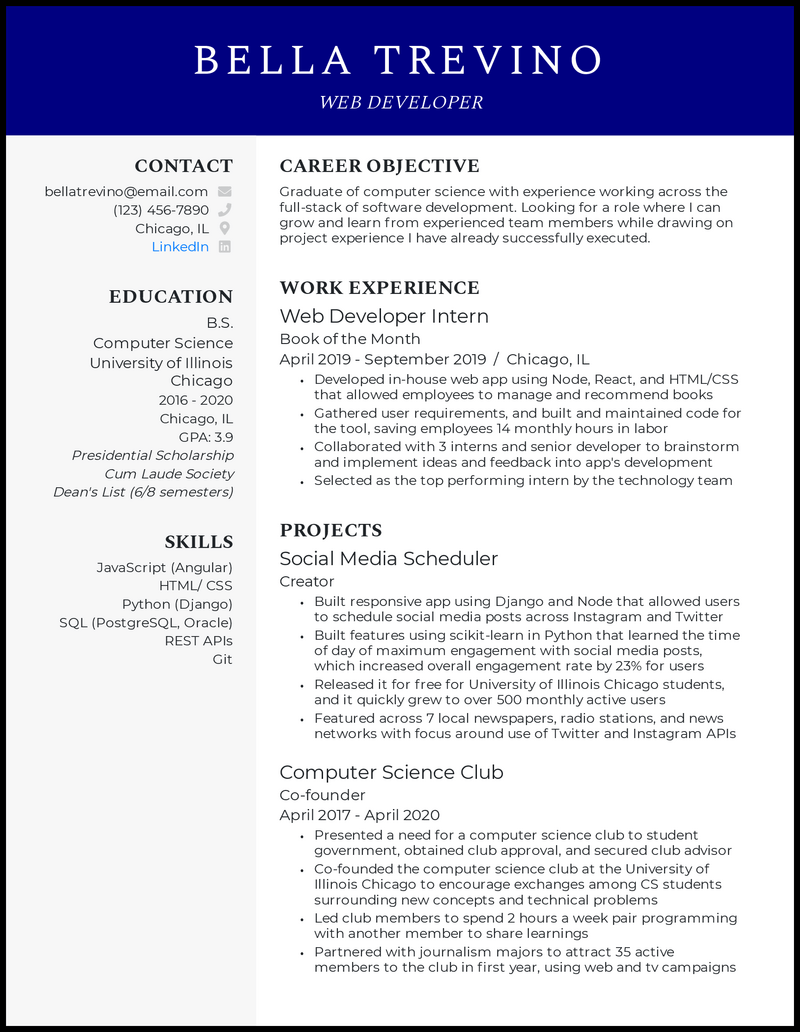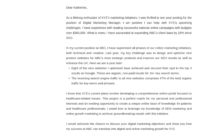Landing your dream job or internship in the fast-paced world of computer science begins long before the interview stage. Your first real opportunity to make an impression is through your curriculum vitae. For a computer science student, this document isn’t just a list of accomplishments; it’s a narrative showcasing your technical prowess, problem-solving skills, and potential to innovate. It needs to be clear, concise, and compelling enough to stand out in a pile of applications from equally bright minds.
Understanding what recruiters are looking for, even when you might not have extensive professional experience, is key. This means highlighting your academic achievements, personal projects, and relevant skills in a way that resonates with the specific roles you are targeting. Think of your CV as your personal marketing brochure, designed to pique the interest of hiring managers and secure that all-important interview slot. Let’s explore how to construct a CV that truly represents your capabilities and aspirations.
Crafting the Perfect Computer Science CV
Building a strong CV from scratch can seem daunting, but it becomes much clearer once you break it down into essential sections. For computer science students, the focus shifts slightly from traditional work experience to demonstrating technical aptitude and project-based learning. Your CV should be a living document, evolving as you gain new skills and experiences, always tailored to the specific job application you are submitting. It’s about presenting your best self in a structured and easy-to-digest format.
Every effective computer science CV, regardless of your experience level, needs certain core components. These sections provide a comprehensive overview of your background and what you bring to the table. The way you present these details can make a significant difference in how your application is perceived. Remember, clarity and relevance are your best friends here, ensuring that recruiters can quickly grasp your qualifications.
Key Sections to Include
- Contact Information: Simple and professional. Include your name, phone number, professional email, LinkedIn profile, and GitHub repository if applicable.
- Summary or Objective: A brief, impactful statement (2-3 sentences) outlining your career goals and what you offer. For students, an objective focusing on learning and contributing is often appropriate.
- Education: List your university, degree, major, expected graduation date, and relevant coursework. Include your GPA if it’s strong.
- Skills: This is crucial for computer science. Categorize your skills (Programming Languages, Frameworks, Tools, Databases, Operating Systems, etc.). Be specific and honest about your proficiency levels.
- Projects: Perhaps the most vital section for students. Detail personal projects, hackathon contributions, or academic projects. For each, describe the project’s purpose, your role, the technologies used, and the outcomes. Quantify impact where possible.
- Experience: Include internships, part-time jobs, volunteer work, or even open-source contributions. Focus on quantifiable achievements and responsibilities, even if not directly computer science related.
- Awards and Achievements (Optional): Any scholarships, academic honors, or competition wins should be listed here to showcase your excellence.
When filling out these sections, think about what a recruiter for a computer science role would want to see. Are you highlighting the programming languages they use? Are your projects showcasing the problem-solving skills they need? Using action verbs and quantifiable results whenever possible will make your descriptions much more impactful. For instance, instead of “Managed databases,” try “Optimized SQL queries, reducing load times by 15%.”

The right **cv template for computer science student** will guide you in structuring these elements logically, ensuring that you don’t miss any critical information. It helps in maintaining a consistent design and layout, which are equally important for readability. Tailoring each section to the job description by integrating keywords from the posting can also significantly improve your chances of passing through automated Applicant Tracking Systems (ATS).
Making Your CV Stand Out in a Crowded Field
In the competitive landscape of computer science, simply having the right sections isn’t enough; your CV needs to truly shine. Beyond the content, the presentation and underlying message you convey are paramount. Recruiters often spend mere seconds scanning a CV initially, so making those seconds count means presenting your information in a way that immediately grabs their attention and highlights your unique value proposition. It’s about more than just listing what you’ve done; it’s about showing what you can achieve.
One of the most effective ways to make your CV stand out is by quantifying your achievements whenever possible. Instead of vague statements like “worked on a team project,” aim for “Collaborated with a 5-person team to develop a scalable web application, resulting in a 20% improvement in user engagement.” Numbers and specific outcomes demonstrate real impact and give recruiters a tangible sense of your contributions and capabilities. Even for academic projects, think about how you can measure success or improvement.
The visual appeal and readability of your CV are also critical. A cluttered or poorly formatted CV can be a major turn-off, regardless of how impressive your technical skills are. Choose a clean, professional font, ensure consistent spacing and heading styles, and use white space effectively to make the document easy on the eyes. Remember, many companies use Applicant Tracking Systems (ATS) to filter CVs, so avoid overly complex designs or graphics that might not be parsed correctly.
- Keep it concise, typically one page for students with less than 2 years of experience.
- Use clear, readable fonts like Arial, Calibri, or Times New Roman.
- Ensure consistent formatting for headings, bullet points, and dates throughout.
- Proofread meticulously for any grammatical errors or typos. Consider having a friend or mentor review it too.
Finally, remember that your CV is part of a larger professional persona. Supplementing your CV with a strong online presence, such as an active GitHub profile showcasing your coding projects or a well-maintained LinkedIn profile, can further enhance your application. These platforms provide additional context and depth to your skills and experiences, offering recruiters a more holistic view of your potential. Regularly updating your CV and tailoring it for each application shows dedication and professionalism, increasing your chances of securing that coveted interview.
A well-crafted CV is your most powerful advocacy tool in the job search. It’s the first conversation you have with a potential employer, and for a computer science student, it’s an opportunity to translate academic achievements and personal projects into tangible skills and professional promise. By focusing on clarity, impact, and relevance, you can create a document that truly opens doors to exciting opportunities in the tech industry. It reflects not just where you’ve been, but where you’re going.
Continually refining your CV as you gain new experiences and learn new technologies will serve you well throughout your career journey. View it as a dynamic representation of your evolving professional identity, always ready to be adapted for the next big challenge. With careful attention to detail and a strategic approach, your CV can become a compelling testament to your abilities, paving the way for a successful future in computer science.
